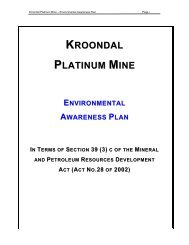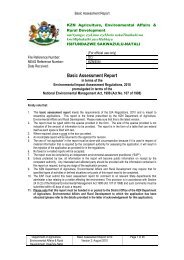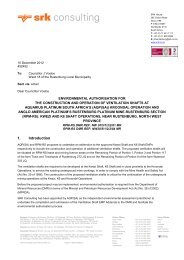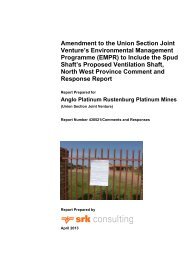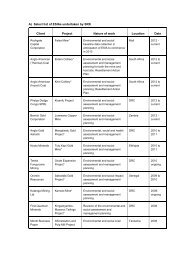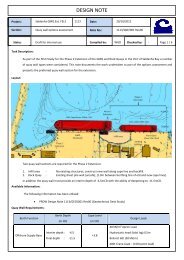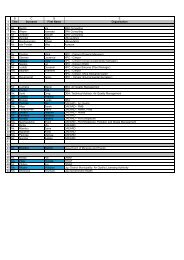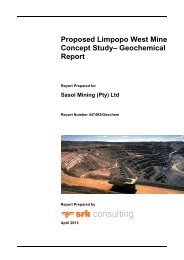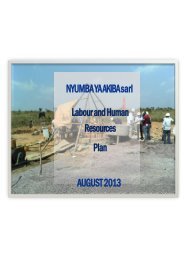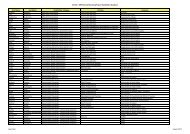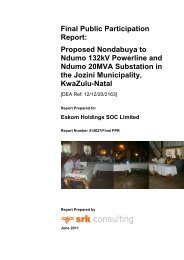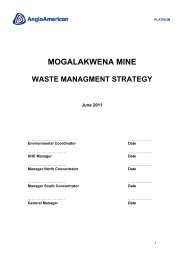Biodiversity (1 - SRK Consulting
Biodiversity (1 - SRK Consulting
Biodiversity (1 - SRK Consulting
You also want an ePaper? Increase the reach of your titles
YUMPU automatically turns print PDFs into web optimized ePapers that Google loves.
oth by reference to the comprehensive literature available and by the subset of<br />
species detected during a field survey done at a particular season and time of<br />
day/night. Such information and personal experience also informs searches for<br />
particular species of conservation concern.<br />
I identified bird species by visual sightings during random transect walks and drives<br />
across the site, attempting to visit and search samples of all recognised habitat types<br />
and with special attention to any unusual features within each habitat. Where<br />
necessary, I used 10x40 binoculars, a 30x spotting scope, the most appropriate field<br />
guide (Sinclair et al. 2002, plus any local guides), and for calls the Roberts VI PDA<br />
version (Gibbon 1997). No trapping or mist netting was conducted, since the terms of<br />
reference did not require such intensive work. The presence of some species was<br />
recognised by their calls or inferred from old nests, food remains, droppings and/or<br />
moulted feathers. Where possible, local people were questioned to try and confirm<br />
occurrence or absence of particular species.<br />
6.3.4 Desktop Survey<br />
Three criteria were used to gauge the probability of occurrence of bird species on the<br />
study site: their known distribution range, their habitat preference(s) and the quality<br />
and extent of suitable habitat(s) on site. Initially, I derived and compared lists of bird<br />
species expected to occur on site from the QDGC records presented in the atlas of<br />
southern African birds (Harrison et al. 1997). Where necessary, I also consulted the<br />
pentad-scale (5' lat. X 5' long.) records of southern African birds from the on-going<br />
SABAP2 project (www.adu.org.za). Based on an assessment of the habitats present<br />
on site, and on the most recent regional field guide(s) for the area (Sinclair et al.<br />
2002), the list was then reduced to those species recorded on site during this study,<br />
or expected subjectively to occur within those habitats as either resident species or<br />
regular visitors.<br />
The probability of occurrence of a bird species on site was based primarily on its<br />
geographical distribution and the suitability of on-site habitats, taking into account<br />
that birds use their mobility to make intermittent use of habitats available when these<br />
are in a particular condition (e.g. during or after rain, flood, drought, burning, grazing,<br />
seeding, flowering) or season (e.g. regional, intra-African or inter-continental<br />
summer/winter migrants and nomads). I assessed the overall expectation of each<br />
species on site as:<br />
SATO Aggeneys July 2011 39



